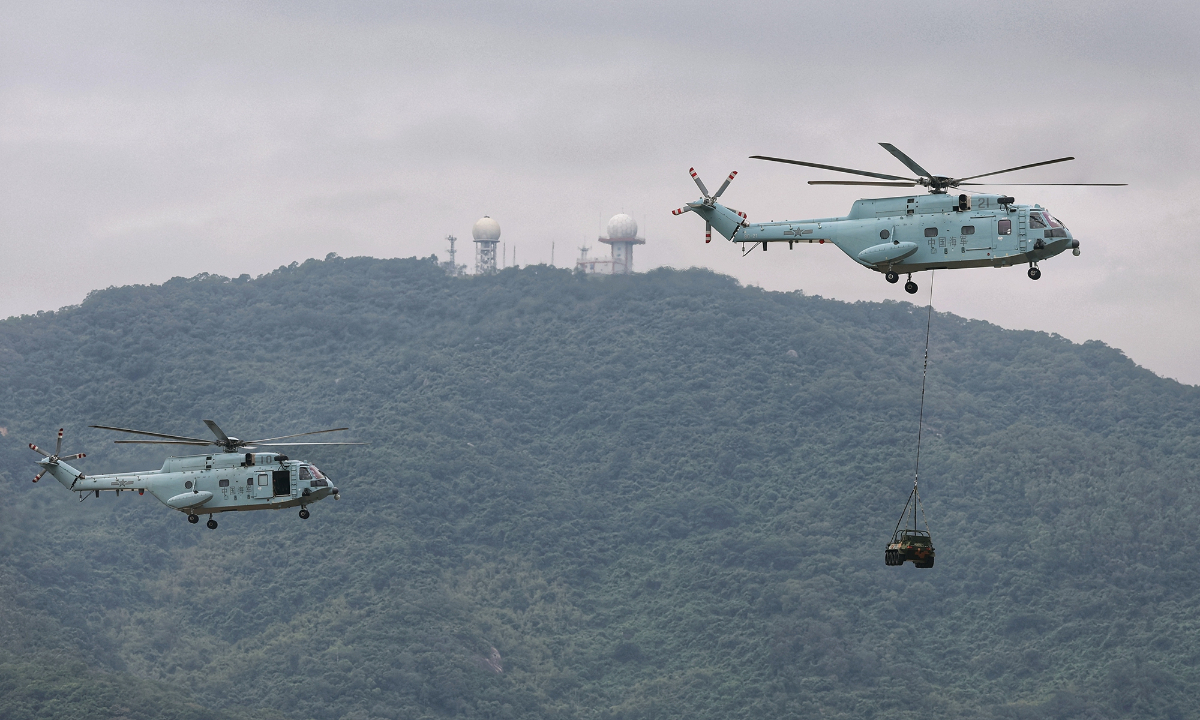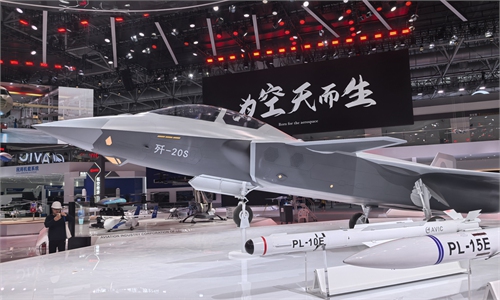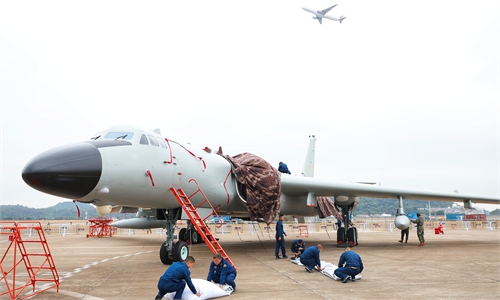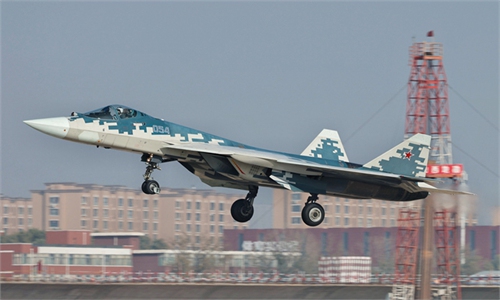Chinese marines debut at Airshow China 2024 with aerobatic displays of naval aviation forces

Z-8C transport helicopters in aerial display training at Airshow China Photo: Cui Meng/GT
Chinese naval aviation units conducted adaptive training on Sunday noon again ahead of the Airshow China 2024 which will be held in Zhuhai, South China’s Guangdong Province from November 12 to 17. A military expert told the Global Times that the flight drill was highly realistic and challenging, demonstrating the advanced skills of naval pilots.
Helicopters and fighter jets that debuted at this year’s Airshow China and participated in the Sunday adaptive training include the Z-20J shipborne helicopter, the Z-8C transport helicopter and the J-15 fighter jets.
The navy arranged displays of air assault operations by the Z-20J shipborne helicopter and Z-8C transport helicopter, with the two types of helicopters carrying marines and related weaponry and conducting coordinated air-ground assault drills. The training aimed to demonstrate a three-dimensional combat, rapid strike, and direct assault process, testing the troops’ capabilities in command organization, firepower, and combat coordination, the Global Times learned from the PLA Navy Marine Corps.
These two types of helicopters made their first public appearance in the Airshow China, and it was also the first time that Chinese marines participated in the airshow, the Global Time learned.
The Z-20J shipborne helicopter and the Z-8C transport helicopter are equipped with new systems and have three distinct features. With the latest domestic engines, advanced manufacturing technologies, and modern weapon systems, the two types of helicopters are capable of rapid assault, responding quickly and maneuvering flexibly, thereby enhancing operational mobility on the battlefield. Their strong combat performance enables them to carry out a variety of military missions, including fire assaults, battlefield transportation, and rescue operations, according to the PLA Navy Marine Corps.
Compared with the traditional Z-20 series, the Z-20J helicopter has a shorter longitudinal wheelbase, making it better suited for various types of warships, capable of taking off and landing under complex and harsh conditions, and adapting well to different conditions at sea.
Zhang Junshe, a Chinese military expert, told the Global Times on Sunday that the Z-20J excels in both ground fire support and maritime assault transport capabilities. Thus, this training focuses on amphibious operations, carrying landing troops for combat missions. The Z-20J can use its equipped air-to-ground missiles, rockets, and machine guns to strike and suppress “enemy” ground targets and fire positions, providing support and cover for landing forces to conduct airborne or aircraft landings or make disembarkation.
The Z-8C transport helicopter is equipped on large surface ships such as amphibious assault ships and landing ships. It can transport marines and their weapons and equipment to carry out vertical helicopter landings and special airborne operations on land-based airports.
According to Zhang, the cooperation between Z-20J and Z-8C shown in the training demonstrate the combat styles these two helicopters will adopt in future amphibious assault operations, which will be more beneficial for increasing the success rate of landings and the effectiveness of strikes against an enemy.
During the Airshow China 2024, the J-15 series fighter jets consisting of J-15D, J-15T and other fighter jets conducted flight exercises including reverse area landing and air-to-air refueling. Reverse area landing and maritime air-to-air refueling are flight maneuvers with strong naval characteristics. They not only showcased the performance of various naval equipment, but also the advanced technical and tactical skills of the naval aviators.
According to Zhang, the maneuvering for reverse area landing is different from the procedures and actions for regular land-based landings. Some excellent land-based pilots initially may find it difficult to adapt when transitioning to carrier-based aviation. They need time to learn the landing methods on aircraft carriers and develop the habit of performing reverse area landing.
The aerial refueling exercise involves refueling between the J-15D and J-15T. Unlike specialized large refueling aircraft, the J-15s can quickly carry out refueling with them being familiar with the situation and high speeds, thus improving operational efficiency, according to Zhang.
However, aerial refueling between two aircraft flying at sea is difficult and requires high precision. The stability and distance between the two aircraft must be carefully maintained, especially under poor weather and sea conditions, which makes the operation more dangerous. This requires pilots to have excellent flying skills and strong mental resilience, Zhang said.



